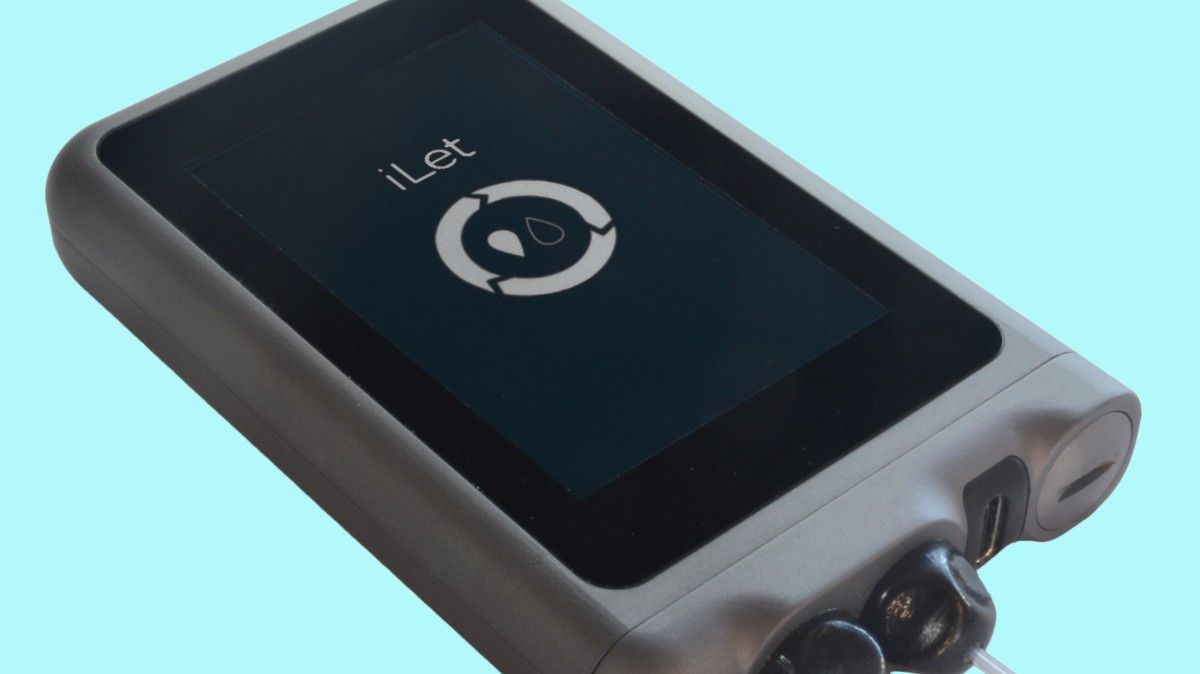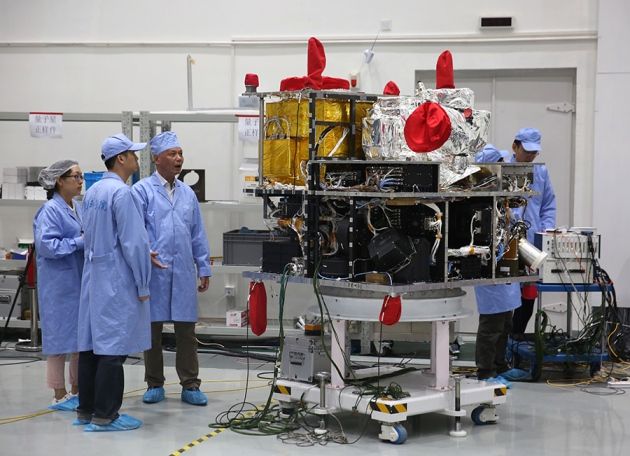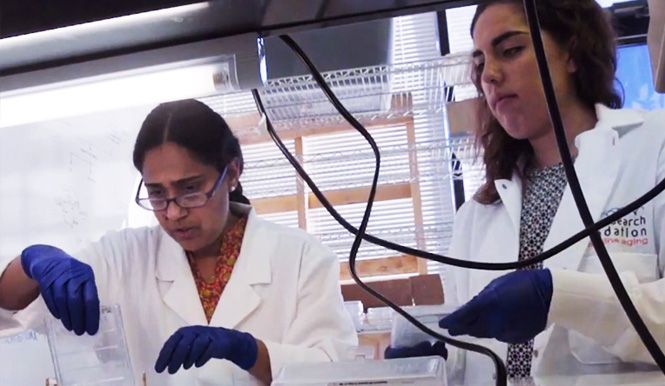When Beta Bionics needed idealistic investors it found them on the Web.


This is how Facebook plans to blanket the entire earth in internet.

All that I can say is “WOW!”
CHINA is on the brink of launching a groundbreaking new satellite capable of conducting quantum experiments in space, leading some to predict it will usher in the beginning of a new space race.
The world will be watching very closely after the Chinese-led satellite launches in August. If it proves successful in carrying out the quantum experiments, China is expected to follow it with many more in a bid to create a super secure network that uses an encryption technique based on the principles of quantum communication.
The reason world powers will be paying such close attention is that quantum-enabled spacecrafts are able to provide communication pathways that are completely unhackable. While the technology has been trialled on the ground over short distances, the capability to do so across the globe would be a huge game changer — it holds the promise of a world with completely secure digital communication.
Nice paper on QC from the Obama Administration. While reading this paper; I also kept in mind why the US, Europe, Canada, etc. all must accelerate our efforts on QC which is government backed hackers in China, etc. especially since China will have a Quantum Internet and have also accelerated their efforts on QC with their partnership with Australia’s QC efforts which many discoveries on QC has happened.
Risk Assessment —
Dark Patterns are designed to trick you (and they’re all over the Web)
No, it’s not only you—some user interfaces today intentionally want to confuse and enroll.

Chinese Government launches in the coming weeks their new Quantum Satellite which advances their networks, communications, etc. The question remaining is with Chinese Government backed hackers; what will they do on this technology.
Discussion in ‘China & Far East’ started by onebyone, Jul 27, 2016 at 8:26 PM.
Website: http://sensproject21.org/
Building the bridge to human clinical trials for rejuvenation biotechnologies.
INTERNET ENTREPRENEUR MICHAEL GREVE COMMITS $10 MILLION TO SENS RELATED RESEARCH AND STARTUPS INCLUDING A $5 MILLION DONATION OVER 5 YEARS TO SENS RESEARCH FOUNDATION.
The social and economic burdens of age-related disease are rising steeply. For an increasing number of older individuals, healthcare is too often reduced to crisis management in the emergency room, painfully harsh treatments for diseases such as cancer, or best efforts at palliative care.
It doesn’t have to be this way.
Project|21 is a new initiative created by SENS Research Foundation to end age-related disease through human clinical trials, starting in 2021, through investment in rejuvenation biotechnology. We have all the pieces in place–core research groups, key players, shared knowledge, and underlying tools—for the creation of this industry. Through three new programs, the Bridge fund, The Center of Excellence, and The Alliance Program, Project|21 will deliver the perfect environment for this fusion of opportunity and investment. With proper stewardship of this emerging industry, we can create an environment where the first damage repair interventions to address specific age-related disease will be brought to human clinical trials within five years.

20 GB/s Wi-Fi
Hold on to your hats – or in this case, your wireless devices – and prepare to be blown away by 802.11ay. The next generation wireless standard promises almost three times the speed of 802.11ad with transmission rates of 20 Gbps, up from 802.11ad’s current rate of 7 Gbps. It will also extend transmission distance from the 10 meter limit of 802.11ad to as far as 300–500 meters!
Scheduled for release next year, 802.11ay will increase bandwidth and improve the reliability and robustness of the 60GHz millimeter wave spectrum. It will be designed to improve throughput, range and use-cases.


MOUNTAIN VIEW, Calif. — July 11, 2016 — SENS Research Foundation today announced its Project|21 campaign to secure $50 million in private support from individual donors, foundations, and corporations. The goal of Project|21 is for SRF to partner with a new generation of visionary philanthropists, build the Rejuvenation Biotechnology industry, and bridge the most challenging gulf between research and treatment by enabling human clinical trials by 2021.
Aubrey de Grey, founder and chief science officer of SENS Research Foundation said, “Ending aging will require large-scale investment to flow into a globally-recognized industry for rejuvenation biotechnology. Since we began in 2009, SENS Research Foundation has been putting all the pieces in place — core research groups, key players, shared knowledge, underlying tools — for the creation of this industry. The key programs funded by Project|21 can create an environment where the first damage repair interventions addressing specific age-related diseases will be brought to human clinical trials within five years.”
The programs funded under Project|21 focus on three major barriers to the development of truly effective rejuvenation therapies. First, funding to convert promising basic research programs into solid investment candidates remains far too scarce. Second, there are too few opportunities for dynamic collaborations with mainstream regenerative medicine. Finally, there is little understanding of the regulatory pathways and clinical infrastructure these technologies will require. Project|21 addresses these three areas by creating a $15 million bridge fund to support promising early stage technologies; a center of excellence to deliver better opportunities for collaborative development of early stage programs; and a Rejuvenation Biotechnology Alliance Program to address challenges in regulation, manufacturing, and investment.
The first donation received for Project|21 is a commitment from German internet entrepreneur Michael Greve’s Forever Healthy Foundation for $5 million in philanthropic support over the next five years. In addition Michael Greve’s company KIZOO Technology Ventures will be committing seed investments of $5 million in startups focused on bringing rejuvenation biotechnology treatments to market.
For more information on the SENS Research Foundation visit www.sens.org. For information on Project|21 visit www.SENSProject21.org. For information on Michael Greve visit www.kizoo.com and www.forever-healthy.org.
Companion Press Release: “Internet Entrepreneur Michael Greve Commits $10 Million to SENS Related Research and Startups including a $5 Million Donation Over 5 Years to SENS Research Foundation.”

SAN FRANCISCO Facebook Inc (FB.O) said on Thursday it had completed a successful test flight of a solar-powered drone that it hopes will help it extend internet connectivity to every corner of the planet.
Aquila, Facebook’s lightweight, high-altitude aircraft, flew at a few thousand feet for 96 minutes in Yuma, Arizona, Chief Executive Mark Zuckerberg wrote in a post on his Facebook page. The company ultimately hopes to have a fleet of Aquilas that can fly for at least three months at a time at 60,000 feet (18,290 meters) and communicate with each other to deliver internet access.
Google parent Alphabet Inc (GOOGL.O) has also poured money into delivering internet access to under served areas through Project Loon, which aims to use a network of high-altitude balloons to made the internet available to remote parts of the world.